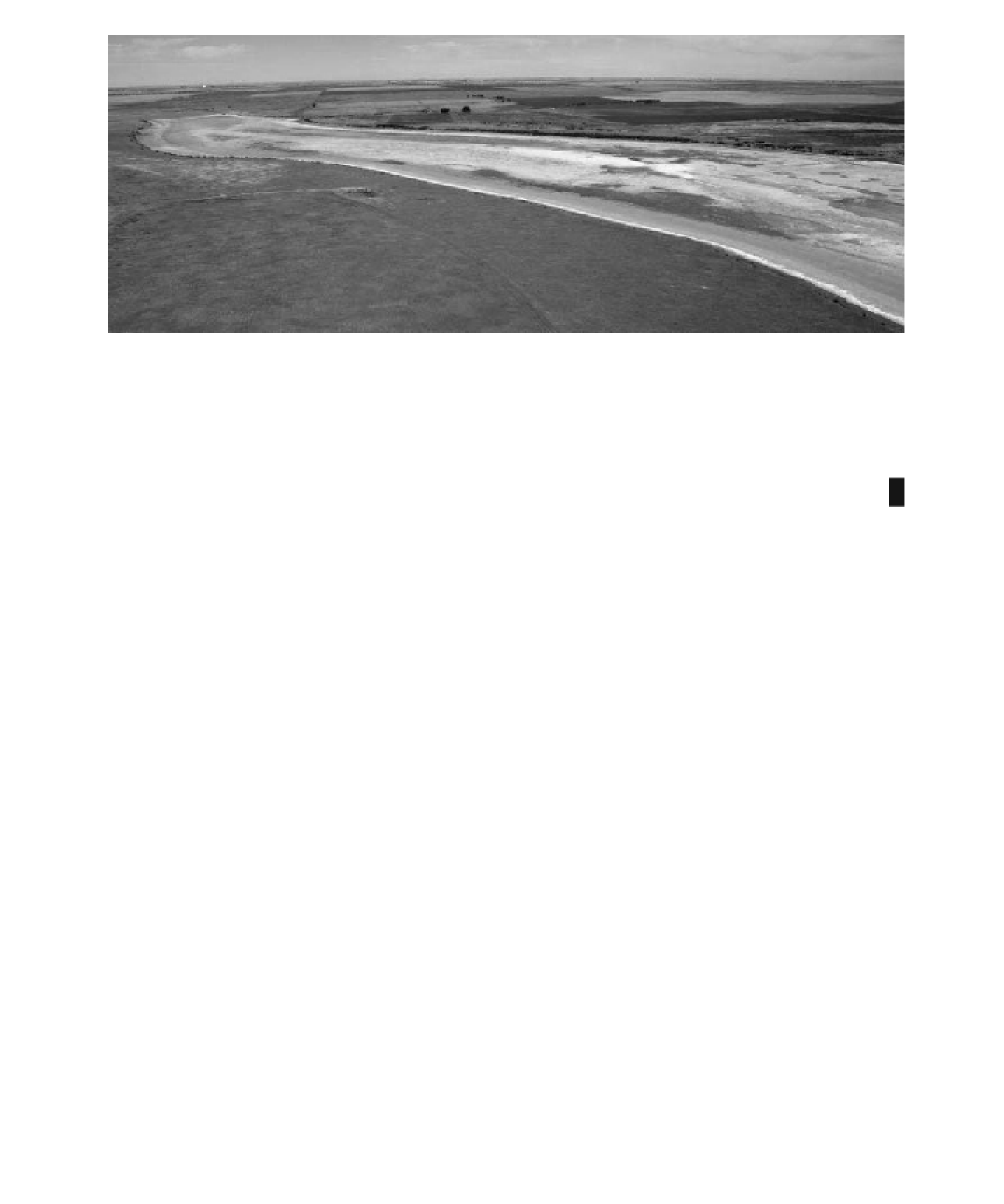Geoscience Reference
In-Depth Information
Figure 18-6.
During a recent 5-year period, Dry Lake has l uctuated between a full body of water to completely
dry salt- and mudl ats (see also Color Plate 16-10). Seen here with moist, salty mudl ats; highly saline ground water
is just below the surface. Overview from eastern end looking westward; kite airphoto by J.S. Aber, G. Corley and B.
Zabriskie, May 2011, western Kansas, United States.
18.4 Future directions
unexpected perturbations. The adaptive
capacity of institutions must be strengthened
in anticipation of such changing conditions.
Stakeholder partnerships - Engagement with
stakeholder groups and their participation in
planning and implementation are critical to
long-term successes in wetland management
(see also chapter 12). Their participation
ensures that wetland management and con-
servation will be relevant to local needs.
Democratizing and devolving the process of
conservation to the local level would provide
legitimacy to a plan and give a greater chance
of success.
Remote sensing technologies - Throughout this
topic we have used aerial photographs and
satellite imagery to demonstrate the value of
this important source of information for
wetland investigations. Visual information is
holistic and offers the means to make tempo-
ral and spatial connections. These datasets
help monitor changing wetland conditions
(Fig. 18-6). They also provide information on
wetland function and health (see also chapter
3). Advances in this technology would improve
our understanding of these unique and
complex ecosystems and provide clues for
their more efi cient future management.
This chapter outlines some threats, challenges
and opportunities that wetland environments
face in the next half century. It is important to
recognize that at no time in the past have dif-
ferent facets of wetland environments been so
well studied and understood. Today, wetlands
are recognized globally as ecosystems vital to
Earth-system functions and for supplying critical
services. Furthermore, the renewed focus on
wise use and sustainability translates into more
institutional resources and greater public atten-
tion and awareness of wetlands. In other words,
there has never been a more opportune time to
engage in wetland conservation and sustainable
management.
The history of environmental conservation
has shown that in most cases, societies have
been
re-active
in their approach. In other words,
it takes serious environmental damage before
public sentiment and governments are moti-
vated to act. In this age of sustainability, public
opinion is perhaps i nally changing to adopt
a
pro-active
approach or one where we act
to protect ecosystems before serious damage
occurs. Water is essential to life, and wetlands
are essential for water.





